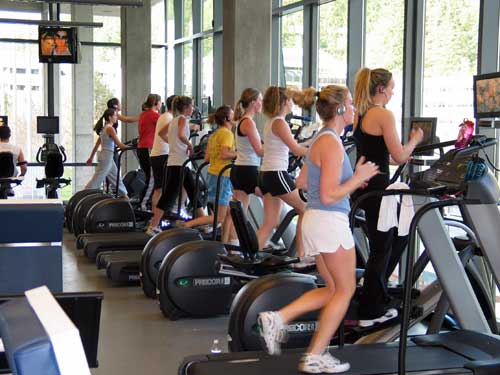<p>Cardio workouts are one the quickest and most effective ways of keeping fit and losing weight, but before you start putting together an exercise plan, you need to think about which kind of cardio is best for you.<br />
Whether you go for high intensity cardio or a lower intensity will depend on several factors, such as your current levels of fitness, the results you are hoping to achieve through exercise, how much time you are able to dedicate to it and the facilities you have access to.<br />
Any cardio is good for you, but both types of workout have their pros and cons that you should consider.<br />
<strong>High intensity cardio pros</strong><br />
High intensity cardio is incredibly beneficial if you are looking to increase fat loss, lose weight and build muscle. It can radically speed up your metabolism, burning calories at a quicker rate not only during the workout itself but also for a period afterward. It also has a much quicker body fat-to-energy conversion than low intensity workouts. There&#8217;s no easier way to get into shape than with high intensity cardio.<br />
Even better, you don&#8217;t need to spend as much time working out as you would with a lower intensity cardio. As long as you keep the work out to a moderate level of intensity throughout, 20 minutes or more dedicated to a specific exercise is enough to burn fat efficiently and get your heart rate levels rocketing. High intensity cardio is more exciting than low intensity cardio, and burns way more calories per hour.<br />
<strong>High intensity cardio cons</strong><br />
High intensity workouts are difficult and can be too intense for some people, especially those who are relatively amateur when it comes to exercise; although it can even push the pros past their pain threshold from time to time. It puts high pressure on your joints, meaning your body could be sore the next day, making it more difficult to maintain a regular routine. However, your body will build endurance over time.<br />
<strong>Low intensity cardio pros</strong><br />
According to many trainers, lower intensity cardio is the ideal workout for directly targeting, and burning, fat. Unlike high intensity cardio, it uses the calories from fat for energy, as opposed to a combo of fat calories and muscle carbohydrate calories. It also helps combats cravings by keeping your insulin levels steady, keeping further weight off.<br />
These kinds of exercises are fairly easy going, won&#8217;t push your body too much, and are less likely to cause any injuries. Because of this, people of any ability or age can benefit from cardio.<br />
<strong>Low intensity cardio cons</strong><br />
To get a good amount of fat burned you have to spend much longer working out, making low intensity cardio much more time consuming. This means it can get boring after a while, and you won&#8217;t feel the effects in the same way you do during more intense workouts, though because you&#8217;ll be maintaining a relatively low heart-rate, you can always multitask whilst exercising.<br />
<strong>Don&#8217;t be afraid to mix them up</strong><br />
A regular exercise routine of 30 or more minutes or low to high intensity cardio will do your body and overall physical and mental health wonders. Mixing up your workouts will stop you becoming bored as well as prevent your body getting used to a particular routine.<br />
As well as burning fat, strengthening your muscles and keeping your insulin levels steady amongst other things, your immune system will also build up and become stronger and more efficient at fighting disease and sickness.<br />
Good calorie burning 30 minute exercises include cycling, swimming, step aerobics, running, rowing, rock climbing and walking.<br />
Author: This post was supplied on behalf of Simply Sweat, online sports wear store.</p>

High Vs Low Intensity Cardio Workouts
